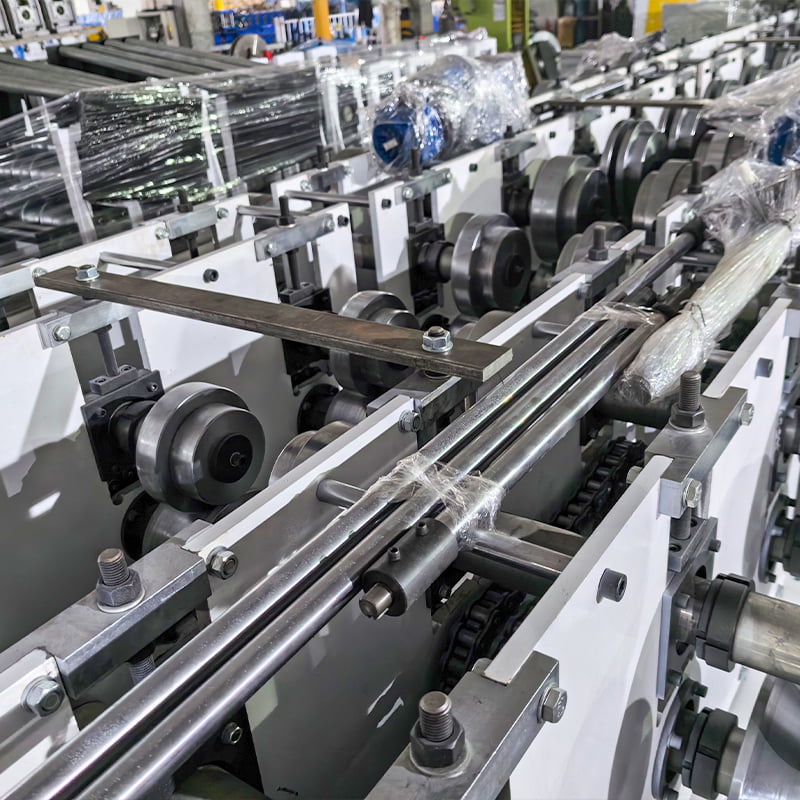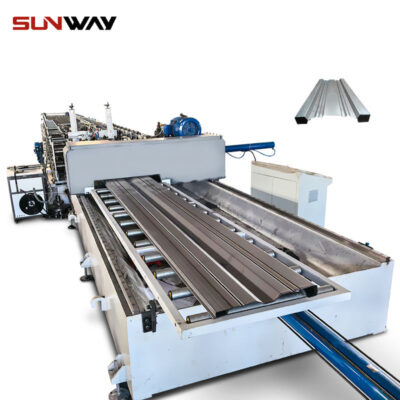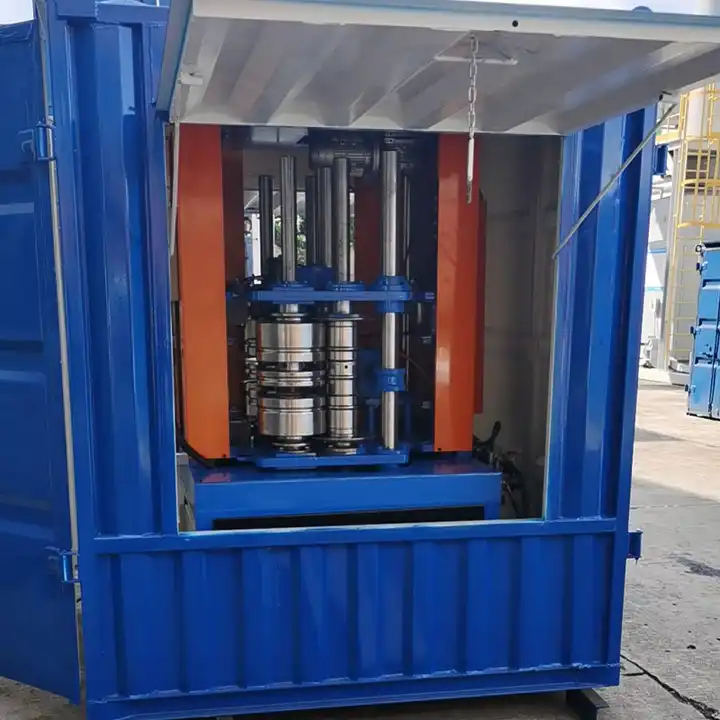Panorama general: ¿Qué es la Revestimiento Metal ondulado?
El revestimiento de metal corrugado es un material de construcción versátil y duradero que está causando furor en la construcción residencial y comercial. Es un material que ofrece resistencia, durabilidad y atractivo estético. Imagine disponer de un material que no sólo proteja su edificio, sino que además le aporte un aspecto elegante, moderno e industrial. Eso es exactamente lo que ofrece el revestimiento de metal corrugado. Tanto si lo está considerando para un proyecto doméstico como para una estructura industrial, este material podría ser la solución ideal. Profundicemos en todo lo que necesita saber sobre el revestimiento de chapa ondulada: cómo se fabrica, cuáles son sus ventajas y cómo elegir el tipo adecuado para su proyecto.
¿Qué hace diferente al metal ondulado?
El metal ondulado recibe su nombre de los patrones ondulados que añaden integridad estructural a las planchas. Se fabrica a partir de metales como el acero galvanizado, el aluminio o metales recubiertos de zinc, lo que garantiza su solidez y resistencia a la intemperie. El material se ha utilizado durante años para cubiertas, pero su aplicación en revestimientos está ganando ahora una inmensa popularidad. ¿Por qué? Es asequible, fácil de instalar, duradero y tiene un aspecto moderno.
Presentación de la Guía de revestimientos de chapa ondulada
El revestimiento metálico ondulado es cada vez más popular por su combinación única de utilidad y estética. La belleza del revestimiento metálico ondulado reside en su sencillez. El diseño ondulado confiere al material una resistencia adicional sin añadir peso, lo que lo hace perfecto para diversas aplicaciones. ¿Cómo funciona el metal ondulado? Es muy sencillo: cuando las láminas se instalan con sus crestas en vertical u horizontal, crean un exterior duradero que puede soportar condiciones meteorológicas extremas, al tiempo que añade un elemento de diseño limpio e industrial.

Tipos de Revestimiento Metal ondulado
Hay diferentes tipos de metales y revestimientos que se utilizan para los revestimientos, cada uno con características únicas. Algunos son más adecuados para uso industrial, mientras que otros son perfectos para aplicaciones residenciales. A continuación se muestran algunos de los tipos más populares de revestimiento de metal corrugado:
| Tipo de revestimiento metálico ondulado | Descripción |
|---|---|
| Acero galvanizado | Fabricado recubriendo acero con una capa de zinc, es el tipo más popular de revestimiento metálico ondulado. Es resistente al óxido y duradero, perfecto para cualquier condición meteorológica. |
| Aluminio | Ligero y resistente a la corrosión, el revestimiento metálico ondulado de aluminio se utiliza habitualmente en zonas con mucha humedad o cerca de los océanos. |
| Zinc | El zinc, un metal que se resiste a la intemperie de forma natural, desarrolla una pátina protectora con el tiempo, lo que significa que se cura a sí mismo y se vuelve más duradero a medida que envejece. |
| Cobre | Conocido por su estética distintiva, el revestimiento de cobre es muy duradero, aunque tiene un precio elevado. Con el tiempo, desarrolla una pátina verde única. |
| Acero corten | Este tipo de acero está diseñado para oxidarse con el tiempo, creando una capa protectora que lo hace increíblemente duradero. Suele utilizarse para conseguir un aspecto rústico y desgastado. |
| Acero inoxidable | Resistente a la oxidación y la corrosión, el acero inoxidable se utiliza habitualmente en entornos industriales y costeros. Proporciona un aspecto limpio y pulido. |
| Acero corrugado pintado | Chapas de acero recubiertas con pintura de alta calidad para mayor protección y personalización del color. Disponible en varios colores, es ideal para viviendas residenciales. |
| Acero Galvalume | Una combinación de revestimiento de zinc y aluminio que proporciona una resistencia a la corrosión superior a la del acero galvanizado. Ideal para zonas costeras. |
| Acero recubierto de poliéster | Una opción económica con revestimiento de poliéster para una mayor protección contra los rayos UV y la intemperie. Suele utilizarse en proyectos más económicos. |
| Estaño | El estaño, habitual en las casas antiguas, es un metal más blando y ligero que requiere un mantenimiento regular para evitar la corrosión y los daños. |
Cada uno de estos materiales aporta su propio conjunto de ventajas e inconvenientes potenciales, en función de sus necesidades específicas. Pero independientemente de cuál elija, el proceso de instalación y mantenimiento del revestimiento metálico ondulado sigue siendo prácticamente el mismo.
Cómo funciona el revestimiento metálico ondulado
El revestimiento metálico ondulado es bastante simple en su concepto, pero muy eficaz en su ejecución. La principal característica que distingue al metal ondulado es el patrón de crestas y valles que forman las chapas. Estas crestas aumentan la resistencia de la chapa y le permiten resistir diversas condiciones meteorológicas, como lluvias torrenciales, nieve o vientos fuertes. Este patrón también permite el drenaje natural del agua, garantizando que la humedad no se acumule y cause óxido u otras formas de deterioro.
Componentes clave y sus funciones
El revestimiento metálico ondulado consta de varios componentes clave que garantizan la resistencia, durabilidad y facilidad de instalación del material. He aquí un desglose:
| Componente | Función |
|---|---|
| Chapas metálicas | Son los componentes principales hechos de acero, aluminio u otros metales. Constituyen el material principal del revestimiento. |
| Fijaciones | Se utilizan para fijar las chapas metálicas a la estructura del edificio, garantizando que el revestimiento permanezca en su sitio. |
| Selladores de juntas | Para evitar que la humedad se filtre entre los paneles, se aplican selladores de juntas. También protegen contra la corrosión. |
| Intermitente | Instalado alrededor de los bordes, como las ventanas o las líneas del tejado, el tapajuntas aleja el agua de la estructura y la protege de las filtraciones. |
| Recortes | Decorativos y funcionales, los remates ayudan a cubrir bordes y juntas, mejorando tanto la estética como el rendimiento del revestimiento. |
| Contrapiso | Esta capa bajo las chapas metálicas actúa como barrera secundaria contra la humedad, añadiendo protección adicional al edificio. |
Estos componentes trabajan juntos para crear una barrera resistente que protege su hogar de los elementos, al tiempo que ofrece un diseño visualmente atractivo.
Proceso de trabajo: Instalación de revestimiento de metal corrugado
El proceso de instalación del revestimiento de chapa ondulada es bastante sencillo, pero requiere una planificación cuidadosa y precisión. He aquí cómo funciona, paso a paso:
- Preparación: Empiece por asegurarse de que la pared o estructura está limpia y seca. Retire el revestimiento existente y prepare la superficie para la nueva instalación.
- Medir y cortar: Mida la zona en la que se instalará el revestimiento metálico y, a continuación, corte las chapas onduladas a medida. Asegúrate de que las chapas se solapan al menos una cumbrera para evitar filtraciones de agua.
- Instalación del contrapiso: Antes de colocar las láminas onduladas, debe instalarse una barrera contra la humedad o un contrapiso sobre la superficie. Esto protege el edificio de la penetración de humedad.
- Fijación de las hojas: Empezando por la parte inferior, fije las láminas con tornillos o clavos. Asegúrese de que las fijaciones se introducen en los valles de las láminas onduladas, no en las crestas, para evitar fugas. Espacie las fijaciones uniformemente para conseguir una sujeción segura.
- Añadir remates y tapajuntas: Se añaden remates y tapajuntas alrededor de ventanas, puertas y bordes del tejado para garantizar que toda la estructura sea resistente a la intemperie. Esto también ayuda a mejorar el aspecto general de la instalación.
- Sellado y acabado: Por último, aplique sellador de juntas en todas las juntas o uniones para garantizar un acabado estanco. Inspeccione en busca de huecos o zonas que puedan requerir una fijación adicional.
-
 Máquina formadora de rollos de tablero de carro
Máquina formadora de rollos de tablero de carro -
 Máquina para fabricar terminales de barandillas de carretera
Máquina para fabricar terminales de barandillas de carretera -
 Máquina Perfiladora de Postes U/C de Carretera
Máquina Perfiladora de Postes U/C de Carretera -
 Máquina Perfiladora de Baranda de Carretera de 2 Olas
Máquina Perfiladora de Baranda de Carretera de 2 Olas -
 Máquina Perfiladora de Baranda de Carretera de 3 Olas
Máquina Perfiladora de Baranda de Carretera de 3 Olas -
 Máquina perfiladora de postes de viñedos
Máquina perfiladora de postes de viñedos -
 Máquina formadora de rollos Sigma Purlin de tamaño automático cambiable
Máquina formadora de rollos Sigma Purlin de tamaño automático cambiable -
 Máquina formadora de rollos de marco de gabinete eléctrico
Máquina formadora de rollos de marco de gabinete eléctrico -
 Máquina formadora de rollos de riel DIN
Máquina formadora de rollos de riel DIN
Parámetros mecánicos personalizados del revestimiento de chapa ondulada
En función de las necesidades específicas de su proyecto, es posible que desee personalizar determinados parámetros mecánicos de su revestimiento metálico ondulado. Esto garantiza que el revestimiento tenga un rendimiento óptimo en función del clima, la estructura del edificio y las preferencias estéticas.
| Parámetro | Opciones personalizadas |
|---|---|
| Espesor | Calibre 24, 26 o 29 (las planchas más gruesas ofrecen más durabilidad, pero son más pesadas y caras). |
| Perfil | Diferentes patrones de ondulación (ondulaciones altas para entornos industriales, ondulaciones bajas para aplicaciones residenciales). |
| Anchura | Disponible en anchuras estándar como 36 pulgadas, pero puede personalizarse para proyectos específicos. |
| Longitud | Las planchas pueden cortarse a medida para adaptarse a cualquier altura de pared, minimizando los residuos. |
| Revestimiento | Varias opciones de resistencia a la oxidación y estética, como Galvalume, acabados pintados o revestimientos de zinc. |
| Color | Acabados de color personalizados para adaptarse a la estética exterior de su edificio. |
Velocidad y eficacia de la máquina en la producción de cartón ondulado
El proceso de fabricación del revestimiento metálico ondulado está muy automatizado y es muy eficaz. Las láminas de metal pasan por unos rodillos que les dan la forma ondulada característica. Dependiendo del tipo de metal y del perfil deseado, las máquinas funcionan a diferentes velocidades y niveles de eficiencia.
| Factor de producción | Especificación |
|---|---|
| Velocidad de la máquina | Oscila entre 15 metros por minuto y 60 metros por minuto, en función de la complejidad de la ondulación. |
| Eficacia | El proceso puede procesar múltiples espesores y perfiles de chapa en una sola tirada, lo que reduce el tiempo de producción. |
| Anchura de la hoja | Las máquinas pueden admitir anchuras de hasta 48 pulgadas para algunos perfiles. |
| Perfil Variedad | Algunas máquinas pueden cambiar de un perfil a otro sin tiempos de inactividad significativos. |
Aplicaciones de Revestimiento Metal ondulado
El revestimiento metálico ondulado ya no es sólo para almacenes o entornos industriales. Su creciente popularidad en la arquitectura moderna lo ha convertido en un material de elección para muchas aplicaciones de construcción. Aquí es donde brilla:
| Solicitud | Beneficios |
|---|---|
| Viviendas residenciales | Añade un aspecto moderno e industrial a la vez que ofrece durabilidad y resistencia a la intemperie. |
| Edificios industriales | Ideal para grandes edificios que deben soportar condiciones climáticas adversas y ofrecer protección a largo plazo. |
| Estructuras agrícolas | Perfecto para graneros y cobertizos por su resistencia al óxido y su capacidad para soportar la humedad. |
| Edificios comerciales | Proporciona un aspecto elegante y profesional a tiendas, edificios de oficinas y restaurantes. |
| Dependencias | Para garajes, talleres y almacenes, el metal ondulado ofrece un exterior duradero y fácil de mantener. |
Instalación, funcionamiento y mantenimiento de revestimientos de chapa ondulada
Para garantizar que su revestimiento metálico ondulado funcione bien durante años, es necesario instalarlo, utilizarlo y mantenerlo correctamente. He aquí una guía rápida para ayudarle a mantener su revestimiento en las mejores condiciones:
| Escenario | Recomendaciones |
|---|---|
| Instalación | Siga los pasos de instalación indicados anteriormente para garantizar un ajuste firme y duradero. Utilice los elementos de fijación adecuados y asegúrese de que las láminas se solapan correctamente. |
| Operación | El revestimiento metálico ondulado requiere un funcionamiento continuo mínimo, pero compruebe periódicamente si hay fijaciones sueltas o signos de desgaste. |
| Mantenimiento | Inspeccione el revestimiento al menos dos veces al año. Limpie cualquier resto o acumulación de suciedad con un cepillo suave y agua jabonosa. Vuelva a aplicar sellador en las juntas y uniones según sea necesario. |
Cómo elegir el proveedor adecuado de revestimientos de chapa ondulada
Elegir un proveedor fiable es crucial para conseguir un revestimiento de chapa ondulada de alta calidad al precio adecuado. He aquí una comparativa de los factores más importantes a tener en cuenta a la hora de seleccionar un proveedor:
| Factor | Consideración |
|---|---|
| Precio | Compare precios entre varios proveedores, pero no sacrifique la calidad por el coste. Los metales más baratos pueden corroerse más rápido o tener perfiles más débiles. |
| Opciones de personalización | Algunos proveedores ofrecen más opciones en cuanto a color, calibre y personalización del perfil. |
| Plazo de entrega | Asegúrese de que el proveedor puede cumplir los plazos de su proyecto sin causar retrasos. |
| Reputación | Busque proveedores con buenas críticas y un historial demostrado de suministro de materiales duraderos y de alta calidad. |
| Atención al cliente | Un proveedor que ofrezca un sólido servicio de atención al cliente puede ayudarle a tomar mejores decisiones y a resolver cualquier problema que surja. |
Proveedores y gama de precios de Revestimiento metálico ondulado
A continuación se ofrece un desglose de algunos proveedores habituales y el rango de precios de los distintos tipos de revestimiento metálico ondulado:
| Proveedor | Material | Gama de precios (por pie cuadrado) |
|---|---|---|
| ABC Techos Metálicos | Acero galvanizado | $2.50 – $4.00 |
| Mueller Inc. | Galvalume | $1.80 – $3.50 |
| Venta de metales | Aluminio | $3.00 – $5.00 |
| Acero Bridger | Acero pintado | $3.50 – $6.00 |
| Productos de construcción ASC | Acero corten | $4.00 – $7.50 |
Ventajas e inconvenientes del revestimiento de chapa ondulada
Para ayudarle a tomar una decisión informada, comparemos las ventajas y desventajas de utilizar revestimiento metálico ondulado:
| Ventajas | Desventajas |
|---|---|
| Durabilidad: El metal ondulado es fuerte, resistente a la intemperie y duradero. | Costo: Aunque asequibles en comparación con algunos materiales, los metales de gama alta como el cobre pueden resultar caros. |
| Atractivo estético: Su aspecto moderno e industrial es perfecto para diseños contemporáneos. | Ruido: El revestimiento metálico puede amplificar el sonido, especialmente durante las tormentas. |
| Bajo mantenimiento: Requiere un mantenimiento mínimo en comparación con los revestimientos de madera o vinilo. | Corrosión: Si no se recubren o mantienen adecuadamente, los metales más baratos pueden oxidarse con el tiempo. |
| Resistente al fuego: El metal no arde, por lo que ofrece una protección adicional en zonas propensas al fuego. | Conductividad térmica: El metal puede conducir el calor, haciendo que los edificios se calienten más en verano sin un aislamiento adecuado. |
| Ecológico: Fabricada con materiales reciclables, lo que la convierte en una opción respetuosa con el medio ambiente. | Dificultad de instalación: Aunque no es complejo, una instalación incorrecta puede provocar fugas de agua o daños estructurales. |

Preguntas frecuentes
| Pregunta | Respuesta |
|---|---|
| ¿Cuánto dura el revestimiento metálico ondulado? | Con los cuidados y el mantenimiento adecuados, el revestimiento metálico ondulado puede durar más de 50 años. Los materiales de gama alta, como el zinc o el cobre, pueden durar incluso más. |
| ¿Es eficiente energéticamente el revestimiento metálico ondulado? | El metal conduce el calor, por lo que no es el material más eficiente desde el punto de vista energético. Sin embargo, puedes mejorar la eficiencia añadiendo aislamiento detrás del revestimiento. |
| ¿Se puede pintar la chapa ondulada? | Sí, muchos tipos de metal corrugado vienen prepintados, pero también puede aplicar pintura para que coincida con la combinación de colores que desee. Eso sí, asegúrate de utilizar pinturas específicas para metal. |
| ¿Cómo se limpia el revestimiento metálico ondulado? | La limpieza es fácil: utilice un cepillo suave y agua jabonosa para eliminar la suciedad y los restos. Evite los productos químicos agresivos que puedan dañar el acabado. |
| ¿Puedo instalar yo mismo el revestimiento metálico ondulado? | Es posible instalarlo uno mismo, pero para obtener mejores resultados se recomienda contratar a un profesional, sobre todo si no se está familiarizado con el material. |
| ¿Se oxida el revestimiento de chapa ondulada? | La mayoría de los tipos son resistentes a la oxidación, sobre todo si están recubiertos de una capa protectora como el zinc o el aluminio. Un mantenimiento regular y un sellado adecuado también ayudan a prevenir el óxido. |
Conclusión
Revestimiento de chapa ondulada es una opción excelente para cualquiera que busque un revestimiento duradero, moderno y versátil. Tanto si le atrae su elegante aspecto industrial como su larga durabilidad, es un material que puede servir tanto para fines funcionales como estéticos. Sólo recuerde elegir el tipo de metal adecuado para su proyecto, seguir las directrices de instalación apropiadas y mantenerlo regularmente para obtener los mejores resultados. Con opciones que van desde el acero galvanizado hasta el lujoso cobre, hay una solución de metal corrugado perfecta para cada tipo de construcción.
Cuando se trata de durabilidad, estética y asequibilidad, el revestimiento de metal corrugado se mantiene firme. Si busca un material de revestimiento que destaque su propiedad y la proteja de los elementos, ¡no busque más!
